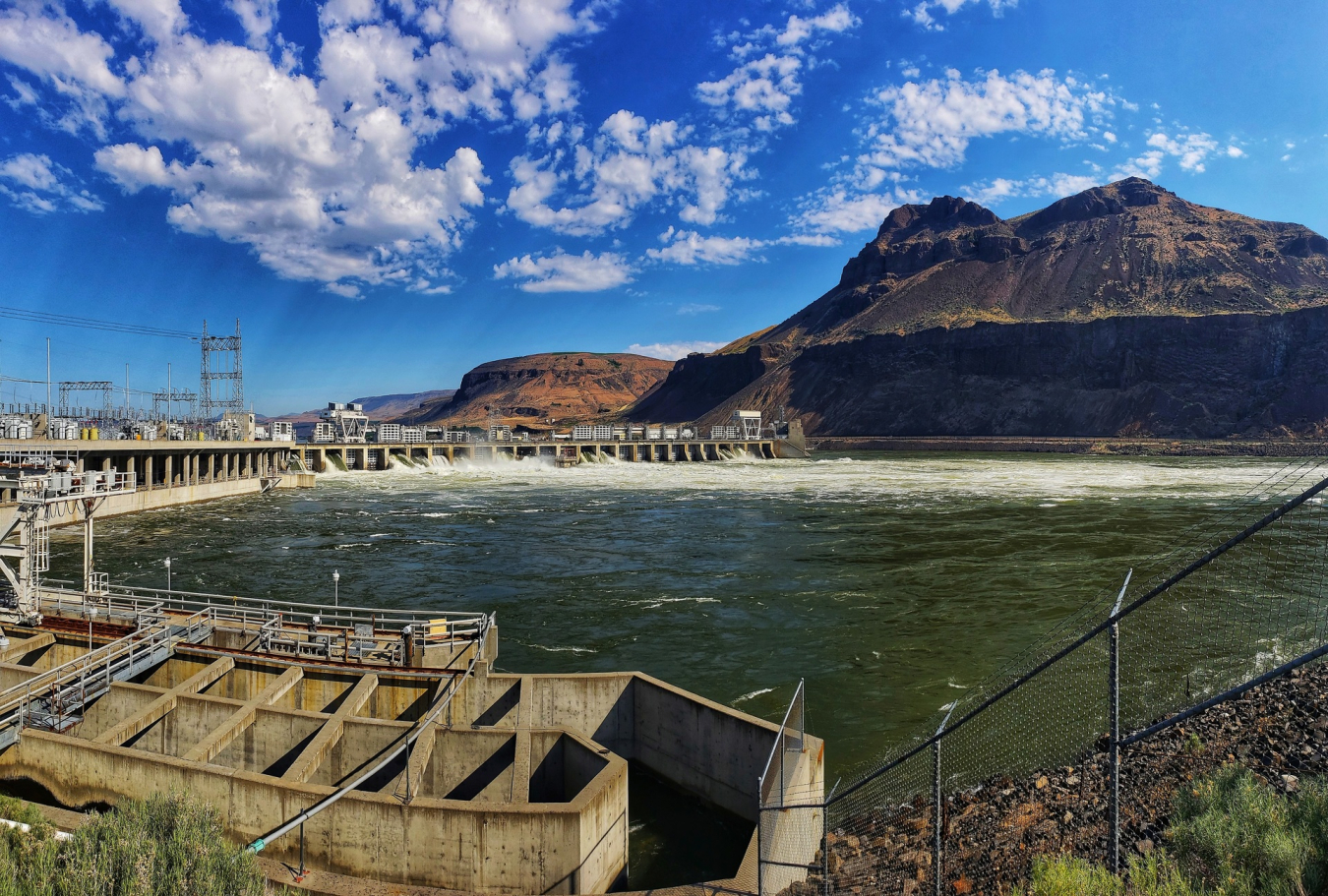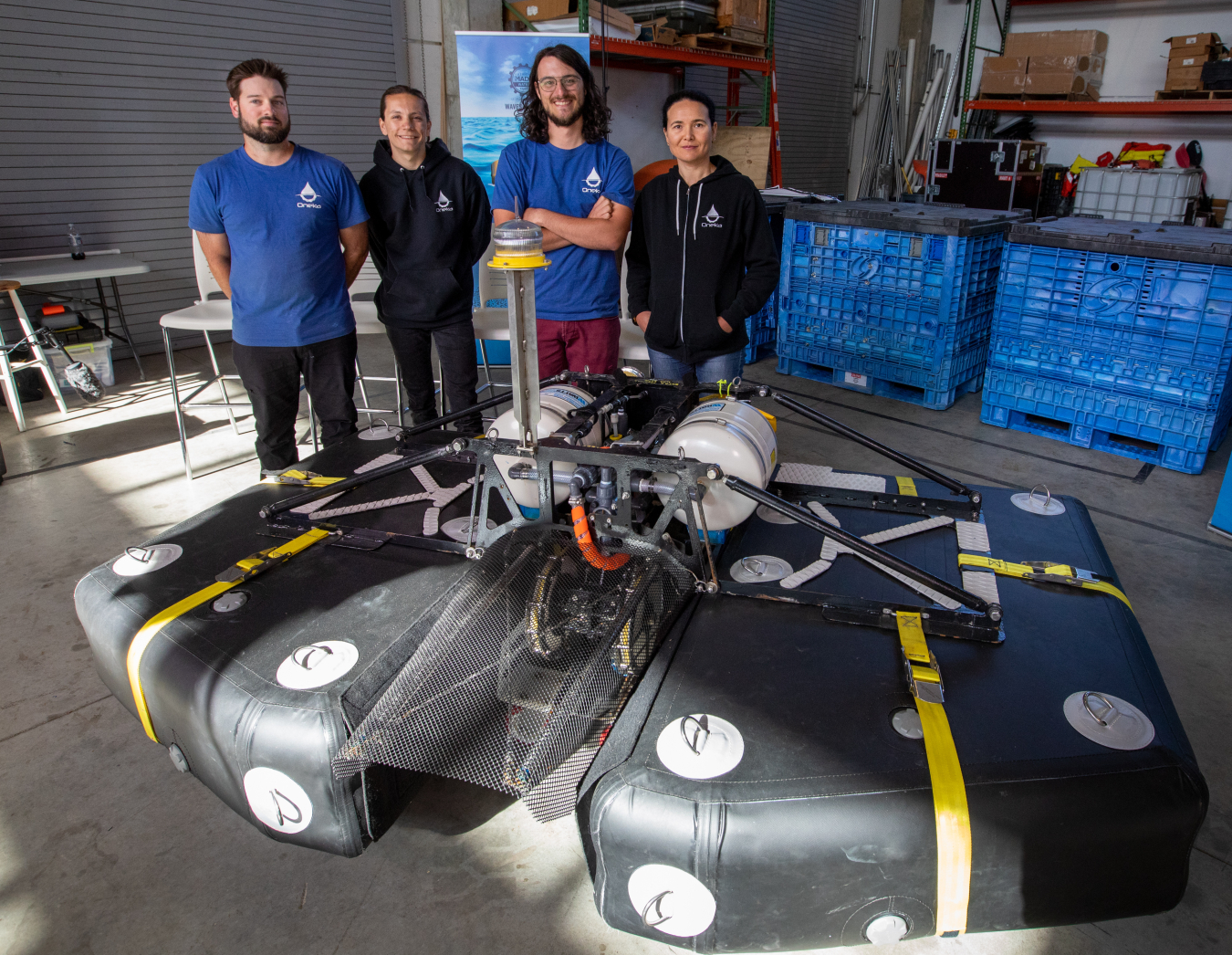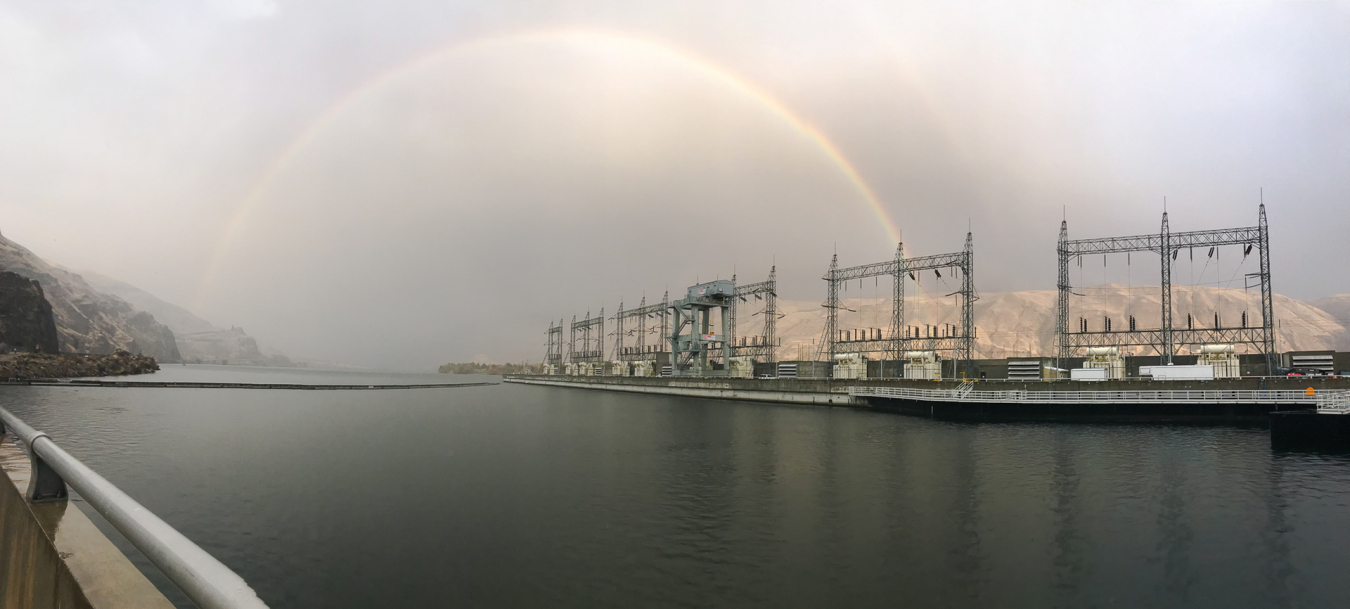The U.S. Department of Energy’s Water Power Technologies Office shares a few of the many successes its experts, labs, and partners achieved in the last year in reflecting on 2022 and looking ahead to 2023.
Water Power Technologies Office
January 13, 2023In reflecting on 2022 and looking ahead to 2023, the U.S. Department of Energy’s (DOE) Water Power Technologies Office (WPTO) is sharing a few of the many successes its experts, labs, and partners achieved in the last year to help reach those ambitious goals. Together with the many other massive efforts underway across DOE, these successes, projects, and people will help build that clean energy future.
The U.S. Department of Energy's Water Power Technologies Office looks back at 2022 and ahead to 2023.
January
WPTO awarded $25 million for marine energy projects that will support increased research, development, and demonstration of wave energy technologies and represent the first round of open-water testing at the PacWave South test site off the Oregon coast.
February
WPTO experts, as part of a larger DOE team, contributed to a report on how to broaden access to DOE funding opportunities and increase the diversity of innovators and entrepreneurs developing clean energy technologies.
A DOE report on the U.S. hydropower supply chain found that while the existing domestic supply chain is mature and effectively supports the nation’s large hydropower fleet, anticipated new construction and the need to complete refurbishments, upgrades, and relicensing activities point to the need to scale up domestic supply chain activities.

A 2022 DOE report found that the U.S. hydropower supply chain may need to scale up to support new hydropower construction as well as refurbishments, upgrades, and relicensing activities.
March
WPTO released its first Multi-Year Program Plan, which outlines the office’s research priorities and plans through 2025.
For Women’s History Month, WPTO celebrated five women in water power, who discussed their varying paths to working in water power and how they’re helping to move the nation closer to its clean energy goals.
April
WPTO sought input from the nonfederal hydropower community on data and research needs to help the office explore how to leverage state-of-the-art climate change science to inform long-term hydropower operation and resource planning.
Oneka Technologies and its wave-powered desalination device, Oneka Snowflake, won the $500,000 grand prize in the Waves to Water Prize, which challenged competitors to design, build, and test devices that use wave energy to produce clean drinking water from ocean water.

Members of the Oneka Technologies team, who competed in and won the grand prize of the Waves to Water Prize, stand with their award-winning device.
WPTO launched the Hydropower Operations Optimization (H2Os) Prize, in which competitors use modeling, data analytics, and machine learning to create new ways for hydropower systems to coordinate with existing grid scheduling practices and meet water management needs, such as water supply, environmental flow requirements, and flood management.
May
WPTO released a new video explaining how it is prioritizing environmental protections and improvements across all hydropower research and development projects.
WPTO is focused on developing new technologies to advance monitoring, mitigation, and metrics for evaluations of impacts and benefits.
WPTO awarded $8 million in funding through its “Technology Innovation to Increase Hydropower Flexibility” funding opportunity. The selected projects will strengthen hydropower’s ability to support an evolving electric grid that includes an increasing amount of variable renewable energy sources.
June
In June, WPTO announced the winners of the 2022 Marine Energy Collegiate Competition (MECC), along with the teams selected to compete in the 2023 MECC and the inaugural Hydropower Collegiate Competition. (Read about the experiences of two MECC alumni, Murphy Gay and Nicholas May-Varas!)
WPTO also released a video focused on how the office is working with marine energy researchers and technology developers to safeguard the thousands of species that inhabit the world’s oceans.
WPTO is focused on developing new technologies to advance monitoring equipment to protect the ocean and its inhabitants.
Two WPTO-funded studies—one from Argonne National Laboratory and the other from the National Renewable Energy Laboratory (NREL)—found that much of pumped storage hydropower’s (PSH) potential remains untapped. Argonne researchers looked at several promising PSH technologies, while NREL researchers evaluated the potential for deploying closed-loop PSH in specific regions across the country.
July
Eight teams won Phase One of the H2Os Prize, and WPTO opened Phase Two, which asked new and returning competitors to plan grid operations and meet water management needs while satisfying more real-world factors in hydropower operations like water flow requirements and water consumption demands.
August
WPTO announced the winners of $500,000 in the BUILD Contest as part of the Ocean Observing Prize DEVELOP Competition. The prize challenged competitors to develop solutions that use marine energy to power hurricane-monitoring systems.

Competitors prepared their marine energy-powered devices for the final stage of the Ocean Observing Prize, which challenged participants to develop creative ways to power hurricane-monitoring systems.
WPTO Director Jennifer Garson celebrated National Hydropower Day by sharing how WPTO works with people from big cities to remote villages, as well as the hydropower industry, to help build cleaner, more resilient American communities—with hydropower.
September
The University Marine Energy Research Community and the Marine Energy Technology Symposium hosted their first marine energy research conference in September. During this event, technical experts presented their marine energy research to help accelerate the pace of sustainable technology development.
A WPTO-funded study found that though drought does raise concerns for hydroelectric generation, the overall hydropower fleet sustained 80% of its average generation for the years 2001–2021. Further, hydropower could still be relied upon to supply flexible power during periods of high energy demand—even during the most severe droughts of the past two decades.

A 2022 WPTO-funded study found that hydropower could be a reliable source of power during periods of high energy demand and even during severe droughts.
WPTO released a $10 million funding opportunity that invests in wave-powered technology innovation, research, and development for seawater desalination and a feasibility assessment for an ocean current test facility.
In late September, WPTO announced six winners in Phase Two of the H2Os Prize and opened the third phase, which built on earlier ones while focusing on weather-related challenges and operations.
October
WPTO announced plans to issue a funding opportunity in early 2023 to advance tidal and river current energy systems. The funding from the Bipartisan Infrastructure Law will focus on developing a tidal or river current research, development, and demonstration site and supporting in-water demonstration of at least one tidal energy system. (WPTO recently announced the addition of a $10 million topic area to this proposed funding opportunity. This new topic area will support at least one tidal or current energy planning and execution project in the United States and bring the total funding to $45 million.)
A new WPTO-funded report from the National Renewable Energy Laboratory analyzed current hydropower workforce trends and needs. It found a new, diverse workforce is critical to the industry’s ability to sustain current operations and grow to support U.S. clean energy goals, and more hydropower-focused educational and training opportunities are needed to address recruitment and hiring challenges.
With funding from the Bipartisan Infrastructure Law, WPTO issued three funding opportunities totaling more than $28 million to support the expansion of low-impact hydropower and PSH, the development of new PSH facilities, and engagement with key voices on issues like hydropower fleet modernization, sustainability, and environmental impacts.
WPTO released a $4 million funding opportunity to reduce the environmental impacts of hydropower with research to enhance innovative fish passage and protection technologies.
November
WPTO opened an opportunity for hydropower developers and other stakeholders to receive technical assistance from DOE national laboratories to help advance hydropower’s role on the electricity grid. The opportunity was especially targeted to PSH developers and other stakeholders who could benefit from assistance addressing valuation hurdles in project development.
December
In December, WPTO announced more than $16 million in new projects to further hydropower and marine energy research and development. These awards encompassed $5.6 million for hydropower projects and $10.5 million for marine energy projects across six national laboratories.
Stay in the know with WPTO! Subscribe to the Water Column, Hydro Headlines, and Water Wire newsletters for information on marine energy and hydropower funding opportunities, events, products, and news.

